When it premiered in 1945, the Rolex Datejust was the first automatic, watertight wristwatch with chronometer-worthy rate quality. It embodied all of the innovations Rolex had developed for wristwatches up to that time, including a date display in a window at 3 o’clock, where the date switched automatically at midnight. To achieve this feat, intermediate wheels in the movement tightened a spring mechanism that advanced the date disk. The Datejust is named for this instantaneous “just-in-time” date switching.
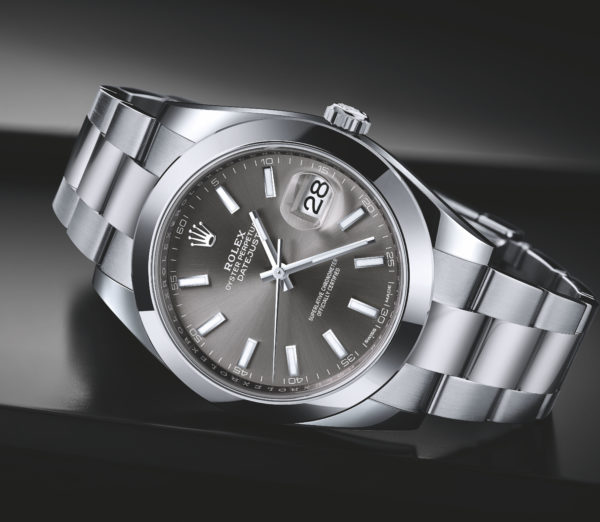
Thanks to a movable finger in Rolex’s new automatic Caliber 3235, which powers the Oyster Perpetual Datejust 41 we’re reviewing here, the date can be reset manually, quickly, and whenever desired. Simply pull the crown out to its middle position, turn it counterclockwise, and the date advances smoothly and accurately. The ergonomic improvements that Rolex made to this caliber, in the interface for making manual adjustments, are very noticeable in practice. The winding stem engages securely in each position so the time can be reset precisely. The crown turns with buttery smoothness. The hands move with no play whatsoever, so the minutes hand can be positioned with its tip perfectly tangent to the desired index. The seconds hand can be stopped at the full minute easily because the screw-down crown’s stem is inserted into a long tube and the unscrewed crown is easy to grasp. Screwing the crown shut again is very secure, with a noticeable spring resistance. This is characteristic of the Twinlock system, which Rolex invented in 1953.
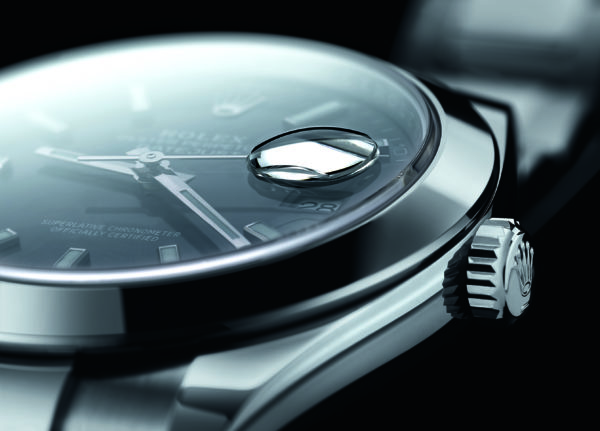
The Twinlock system’s interplay with the Oyster case guarantees that the Datejust can resist pressure up to 10 bar, which corresponds to the conditions at a depth of 100 meters below the water’s surface. Two insulators help ensure watertightness: one is located in the winding crown while the other is situated inside the tube. A line under the Rolex logo on the winding crown of our steel Datejust shows that our test watch has the Twinlock system. Gold Oyster cases have two dots on the crown to indicate the presence of the Twinlock system, while platinum cases have one dot.
Our Datejust’s newly designed Oyster case has a middle piece milled from a single block of 904L stainless steel. A smooth, polished stainless-steel bezel surrounding a flat pane of sapphire seals the case from above. The Cyclops magnifying lens above the date window wasn’t added to the Datejust until 1954. It performs its practical purpose thanks to its magnifying effect and the anti-reflective treatment on both its surfaces.
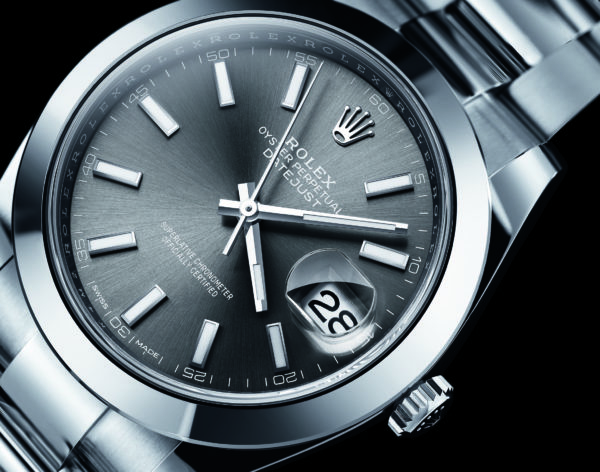
The back of the case isn’t very exciting: it provides no information about any of the Datejust’s characteristics, like its water resistance, its materials, or its reference number. Furthermore, the back can only be removed using a special wrench, which Rolex’s authorized watchmakers slip over the knurling along the edge of the caseback. Unfortunately, Caliber 3235 remains invisible to would-be admirers who don’t have access to this tool. That’s a pity, because this movement has nothing to hide. It boasts all the fine characteristics of a Rolex caliber: distinctively shaped and arranged bridges, gold-plated covers, red reversing wheels in the automatic-winding mechanism, and handsome finishing such as sunburst patterns, brushed matte parts, a few beveled edges, and polished heads on the screws.
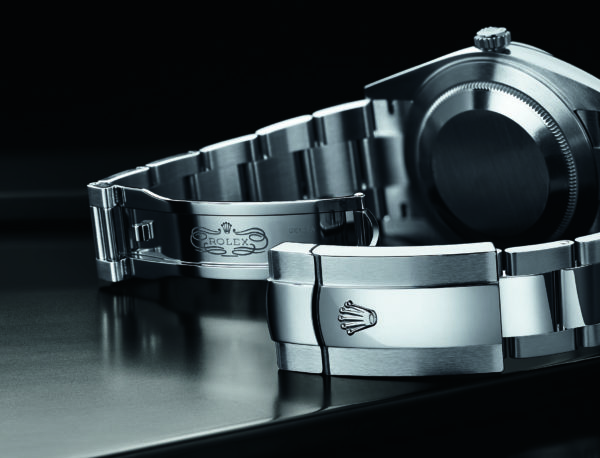
Rolex inaugurated a new generation of mechanical movements in 2015 with two precious-metal models: the Day-Date 40 and the Datejust Pearlmaster 39. This was followed in 2016 by a bi-color version of the Datejust 41, and in 2017 by the Datejust 41 in stainless steel and the new 43-mm Sea-Dweller. Fourteen patents protect Caliber 3235, which marks a new performance standard for the brand in terms of rate precision, power reserve, shock resistance, resistance to magnetic fields, ease of adjustment and reliability. Compared to its predecessor (Caliber 3135), 90 percent of its components have been revised and optimized: from the mainspring and the barrel to the automatic-winding mechanism, and from the gear train to the escapement. The latter bears the Chronergy name and is a patented Rolex innovation.
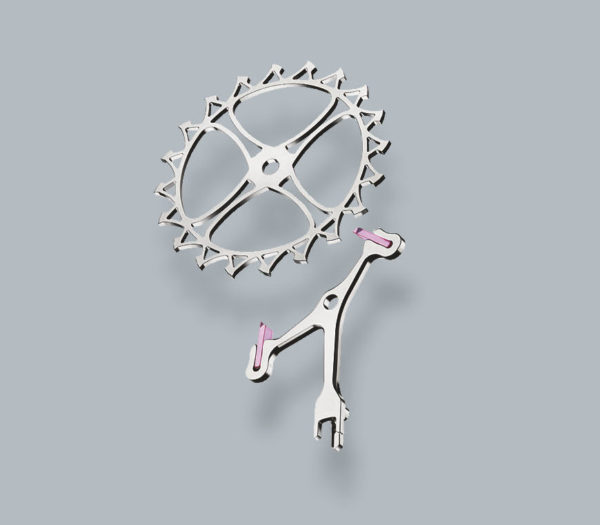
The Chronergy escapement increases the efficiency of the Swiss lever escapement by 15 percent. This accounts for nearly half the boost in the movement’s running autonomy, which now far surpasses Caliber 3135’s 48 hours; Caliber 3235 amasses a power reserve of approximately 70 hours. The remaining lion’s share of the increase was achieved by changing geometries. Rather than being arranged in a continuous line, as in the past, the elements of the escapement are now set on an angle, which results in greater leverage. The escape wheel is skeletonized to lighten its weight and reduce its inertia. The ruby pallet stones have been thinned to 125 micrometers, a 50-percent reduction compared to the previous ones. And the contact surfaces of the escape wheel teeth have been doubled. Moreover, fabrication from a nickel-phosphorous alloy assures that the Chronergy escapement is insensitive to magnetic interferences. This is also true of the blue Parachrom hairspring, which “breathes” inside Caliber 3235 and is made from a niobium-zirconium-oxygen alloy. This little spring, which has been proven to remain stable despite temperature fluctuations and shocks, ends in an optimized Rolex overcoil and is mounted on a large balance with variable moment of inertia. The balance can be finely adjusted by turning four gold Microstella nuts along its rim. Highly precise mechanical processing has improved the adjustment of the balance by a factor of three.
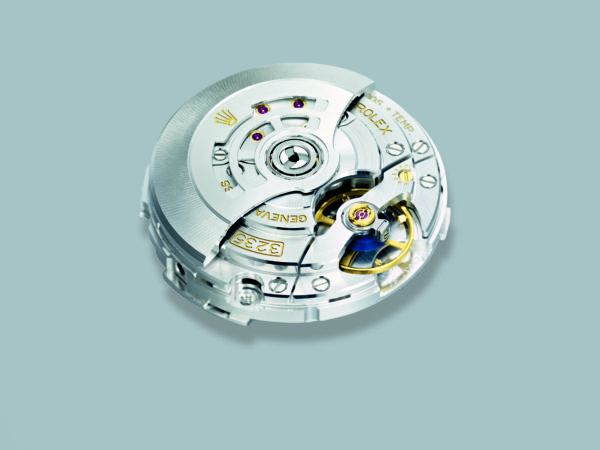
The balance oscillates on a staff with a new geometry, offering greater resistance to magnetic fields, and is protected by Rolex’s Paraflex anti-shock system. The oscillations occur under a stable bridge with greater impact resistance, an optimized height-adjustment system, and new integrated protection for the balance wheel.
At the other end of the energy chain, highly accurate mechanical processing enabled Rolex to achieve a 50-percent reduction in the thickness of the barrel’s wall. The greater volume of space inside the barrel can accommodate a longer mainspring, which results in an additional gain of 10 hours of running autonomy. Farther along the power train, new lubricants improve the efficiency of the gear train. Incidentally, Rolex develops and synthesizes these lubricants itself. Last but not least, the new Perpetual rotor more quickly replenishes the reservoir of energy in the barrel. The oscillating weight is cut out to absorb shocks: it’s now made from a monobloc and is fitted on a ball bearing. The weight is held at its center by a single screw, thereby facilitating assembly.
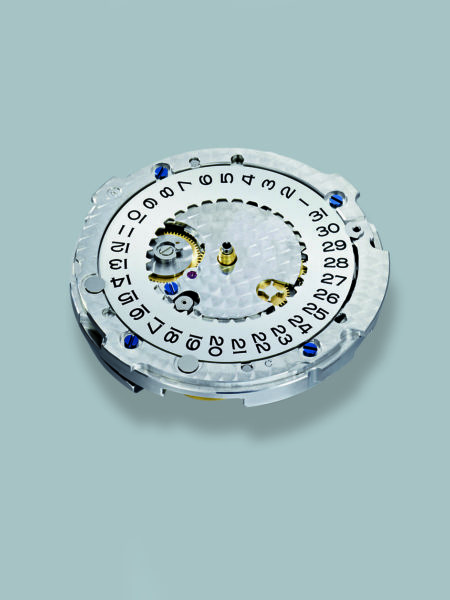
Like all Rolex models, our tested watch is certified as a “Superlative Chronometer,” according to Rolex’s own precision standard, which was redefined in 2015. This norm is more rigorous than any of the generally valid standards in the watch industry. For example, Rolex insists that the rate tolerance of the movement after installation inside the case must not stray beyond ±2 seconds per day. We tested this on our timing machine and then on equipment that simulates the conditions of daily wear on a wrist. None of our measured values exceeded 1 second per day. The performance also remained within these narrow limits more than two days after the exhaustion of the specified power reserve and after exposure to a magnetic field of 1,000 gauss. The rate fluctuated slightly while under the direct influence of magnetic fields, but it immediately normalized afterward and without demagnetization. Compared to Zenith’s Defy El Primero 21, which we subjected to the same tests, Rolex’s Datejust was much less disturbed by magnetization.
The adjective “Superlative” on our Datejust’s anthracite-colored rhodium dial aptly describes the exceptional abilities of Caliber 3235. The sunburst pattern on the watch’s face plays with the light, as do the shiny frames around the applied hour indexes and the facets on the hands. This exerts only a minor influence on the watch’s legibility because everything is sufficiently large, well proportioned and neatly arranged. When the lights go out, the Chromalight inlays in the indexes and hands shine with such an intense blue glow that it hardly bothers the observer that two indicators have no luminous material: the date at 3 o’clock and the Rolex crown at 12.
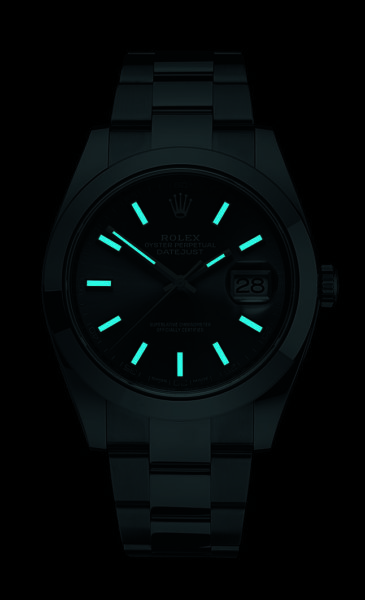
The Oyster bracelet attaches to the case where the Rolex logo crowns the dial. The wristband fits seamlessly in the newly designed connecting pieces that are firmly anchored between the lugs. The three-row bracelet consists of solid, partly polished, and partly satin-finished elements made of 904L stainless steel. Several of these parts are screwed together near the clasp so the bracelet’s length can be easily adjusted.
The Oysterclasp folding clasp is equipped with the Easylink extension system, a system patented by Rolex that allows the bracelet’s length to be varied easily by as much as 6 mm. All in all, the Datejust 41 unites the latest developments from the Rolex brand, just as its predecessor did when it was introduced more than 70 years ago. This isn’t noticeable at first glance, and the understatement is exactly what makes this model so appealing.
The Rolex Oyster Perpetual Datejust 41 is priced at $7,350.
All photos by OK-Photography.

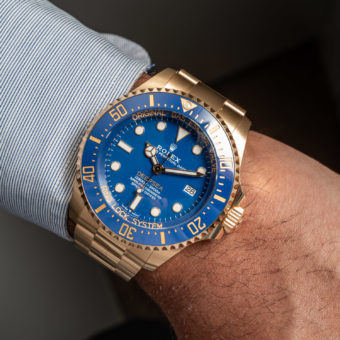
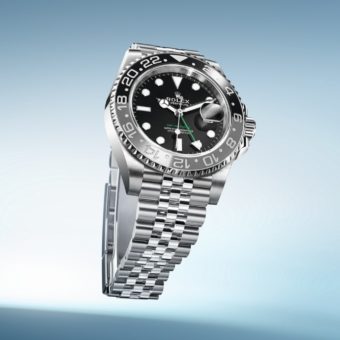

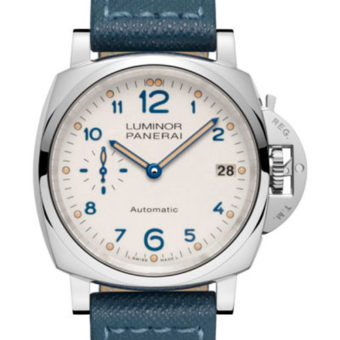
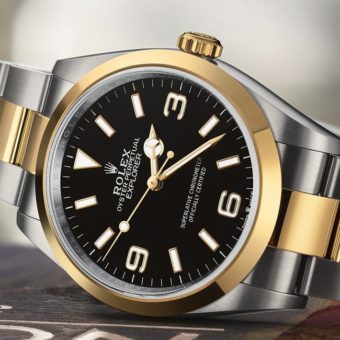

Excellent description and write up.
Why does Rolex continue to allow its dealers to exceed recommended fair prices for its pieces?
Supply and demand should not condone simple greed!
When a man has a world in his hands, you expect to find a Rolex on his wrist. – https://graciousquotes.com/rolex-quotes/
Looks like a poor copy of my Ball Engineer M Marvelight!
You compare a ball with a Rolex. Hahhhaa your funny! Its a Kia vs Mercedes…..
I have the Wimbledon dial on steel, smooth bezel with oyster bracelet.
The clasp also has three anchor positions allowing three 3mm positions for a fine tune fit. Overall my watch has much reduced lume with just the hands and nine o’clock marker but this looks ‘stealth’ and also I could care less as I never use this feature. Lume is just a gimmick really, it stays bright for all of 2 mins then fades to nothing. The full steel jacket is the Datejust steel sports cross over variant. I’m not one for precious metals, diamonds, fluted bezels or jubilee bracelets as I find these too flashy. I find the Wimbledon dial with green outlines to be a fascinating and unusual look. It never grows old and the nod to Rolex green is quite cool and subtle. Plus I’m a tennis nerd so it all works together for me personally. I’ve found the 3235 movement to be slightly more accurate than my Sub’s 3135 but not by much. Maybe 15 seconds better. Overall the DJII is a very cool offering and the steel end of the spectrum is the Audi with the Rills Toyce engine. The best bang for the buck at that price point. Show me a better piece you can actually buy without waiting for the money.
simple n good looking
I have the gold and steel with champagne dial and fluted gold bezel. A beautiful watch indeed but two drawbacks. The highly polished case scratches easily. The luminous is very weak, I cannot see the hands at all.
Need more information
Great review – Thanks!
Great review but you forget to write about weight of the watch, deviation, as you used to.
I’ve been wearing one of these DJ41s for 6 months, and it is as superbly designed and accurate as your article says.
The only downsides I’ve noticed are – the lume is weak compared to all my other watches, the lack of anti-reflective coating can significantly impact readability (particularly on my blue dial) and the polished areas are just as much a scratch magnet as any other steel watch. Oh, and I would have preferred very slightly thicker hands to better balance with the hour markers.
But criticisms aside, I’m confident this watch will outlast me!
Having owned and worn many Rolex Sport models starting with a 1016 Explorer in 1971 I can attest that by all quantitative measures of durability, consistent timekeeping, style, water resistance and ownership cost factored in they have earned their reputation as the best luxury watch overall in the marketplace today. I would also like to mention that ALL new Rolex chronometers even those without the new movement are now achieving a plus or minus 2 sec daily rate without any radical escapements. In addition to that the legendary resale value and easy serviceability by qualified CW21 watchmakers actually allows an owner to own a Rolex for no more overall cost than many watches half their price. Yes, I have owned many other premium timepieces but none of them come close overall and don’t feel as good on the wrist because they don’t have bracelets with fine micro adjustments like Rolex has.
I don’t work for Rolex or sell Watches for a living but have enough experience to give an accurate and honest opinion. There is a reason that People are willing to wait many months for new introductions.
I wish the price you quote was true, I would buy it tomorrow.